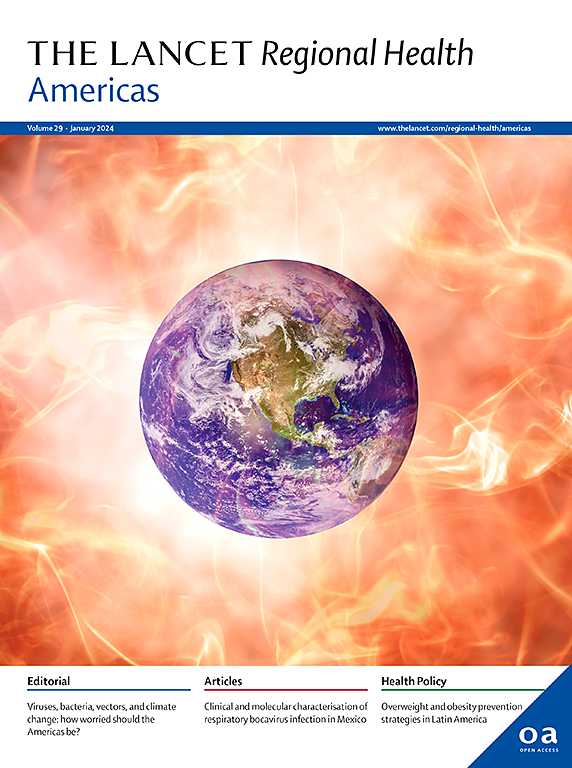Validation of VaxEstim, a Bayesian model for rapid estimation of measles–mumps–rubella vaccination coverage at outbreak onset: a cross-sectional study
IF 7
Q1 HEALTH CARE SCIENCES & SERVICES
引用次数: 0
Abstract
Background
Accurate estimation of vaccination coverage at the onset of an outbreak is critical for guiding timely public health responses. Conventional methods often rely on delayed or incomplete data that obscure immunity gaps. During the 2022–2023 central Ohio measles outbreak, Columbus Public Health estimated measles–mumps–rubella (MMR) coverage at 80–90% despite incomplete reporting. Martoma et al. developed VaxEstim, a statistical model that generated an early estimate of two-dose MMR coverage in the outbreak-exposed population at 53.0% (95% credible interval [CrI] 21.0–77.0) using limited publicly available case-based data. A subsequent epidemiological investigation by Martoma et al. defined the outbreak-exposed population as children <15 years of age, of Somali descent, residing in Columbus (Ohio, USA), and receiving care within a primary care network (PCN).
Methods
We conducted a cross-sectional validation study using electronic medical records from the PCN of 133,476 children <15 years of age. This cohort included 9864 children of Somali descent residing in Columbus, who comprised the previously defined outbreak-exposed population. Two-dose MMR coverage was defined as ≥2 valid doses by the outbreak onset date of October 8, 2022. VaxEstim's predicted coverage was compared with observed coverage in this group.
Findings
Observed two-dose MMR coverage among the outbreak-exposed population was 42.4% (4181 of 9864; 95% CI 41.4–43.4), compared with VaxEstim's early-phase prediction of 53.0% (95% CrI 21.0–77.0). The wide credible interval reflects uncertainty typical of early outbreak phases. Model performance showed a mean absolute error of 0.106 and a mean squared error of 0.0113.
Interpretation
This study externally validates the VaxEstim prediction against observed coverage in this outbreak-exposed population. The model accurately predicted substantial underimmunisation, underscoring its potential to guide rapid, targeted public health action.
Funding
National Institute of General Medical Sciences, National Institutes of Health; National Science Foundation.
验证VaxEstim,一个用于快速估计麻疹-腮腺炎-风疹疫苗接种覆盖率的贝叶斯模型:一项横断面研究
背景在疫情发生时准确估计疫苗接种覆盖率对于指导及时的公共卫生反应至关重要。传统方法往往依赖于延迟或不完整的数据,从而掩盖了免疫差距。在2022-2023年俄亥俄州中部麻疹暴发期间,哥伦布公共卫生部门估计麻疹-腮腺炎-风疹(MMR)的覆盖率为80-90%,尽管报告不完整。Martoma等人开发了VaxEstim,这是一个统计模型,使用有限的公开病例数据,产生了疫情暴露人群中双剂量MMR覆盖率的早期估计,为53.0%(95%可信区间[CrI] 21.0-77.0)。Martoma等人随后进行的流行病学调查将疫情暴露人群定义为15岁儿童,索马里血统,居住在哥伦布(美国俄亥俄州),并在初级保健网络(PCN)内接受护理。方法采用133,476例15岁儿童PCN电子病历进行横断面验证研究。该队列包括居住在哥伦布的9864名索马里后裔儿童,他们构成了先前定义的暴露于疫情的人口。两剂MMR疫苗的覆盖率定义为到2022年10月8日疫情发病日期≥2剂有效剂量。将VaxEstim的预测覆盖率与该组的观察覆盖率进行比较。结果:与VaxEstim的早期预测53.0% (95% CrI 21.0-77.0)相比,在暴露人群中观察到的双剂量MMR覆盖率为42.4%(9864人中有4181人;95% CI 41.4-43.4)。较宽的可信间隔反映了典型的早期爆发阶段的不确定性。模型性能的平均绝对误差为0.106,均方误差为0.0113。本研究从外部验证了VaxEstim预测在该疫情暴露人群中观察到的覆盖率。该模型准确地预测了严重的免疫不足,强调了其指导快速、有针对性的公共卫生行动的潜力。美国国立卫生研究院普通医学科学研究所;国家科学基金会。
本文章由计算机程序翻译,如有差异,请以英文原文为准。
求助全文
约1分钟内获得全文
求助全文
来源期刊

Lancet Regional Health-Americas
Multiple-
CiteScore
8.00
自引率
0.00%
发文量
0
期刊介绍:
The Lancet Regional Health – Americas, an open-access journal, contributes to The Lancet's global initiative by focusing on health-care quality and access in the Americas. It aims to advance clinical practice and health policy in the region, promoting better health outcomes. The journal publishes high-quality original research advocating change or shedding light on clinical practice and health policy. It welcomes submissions on various regional health topics, including infectious diseases, non-communicable diseases, child and adolescent health, maternal and reproductive health, emergency care, health policy, and health equity.
 求助内容:
求助内容: 应助结果提醒方式:
应助结果提醒方式:


